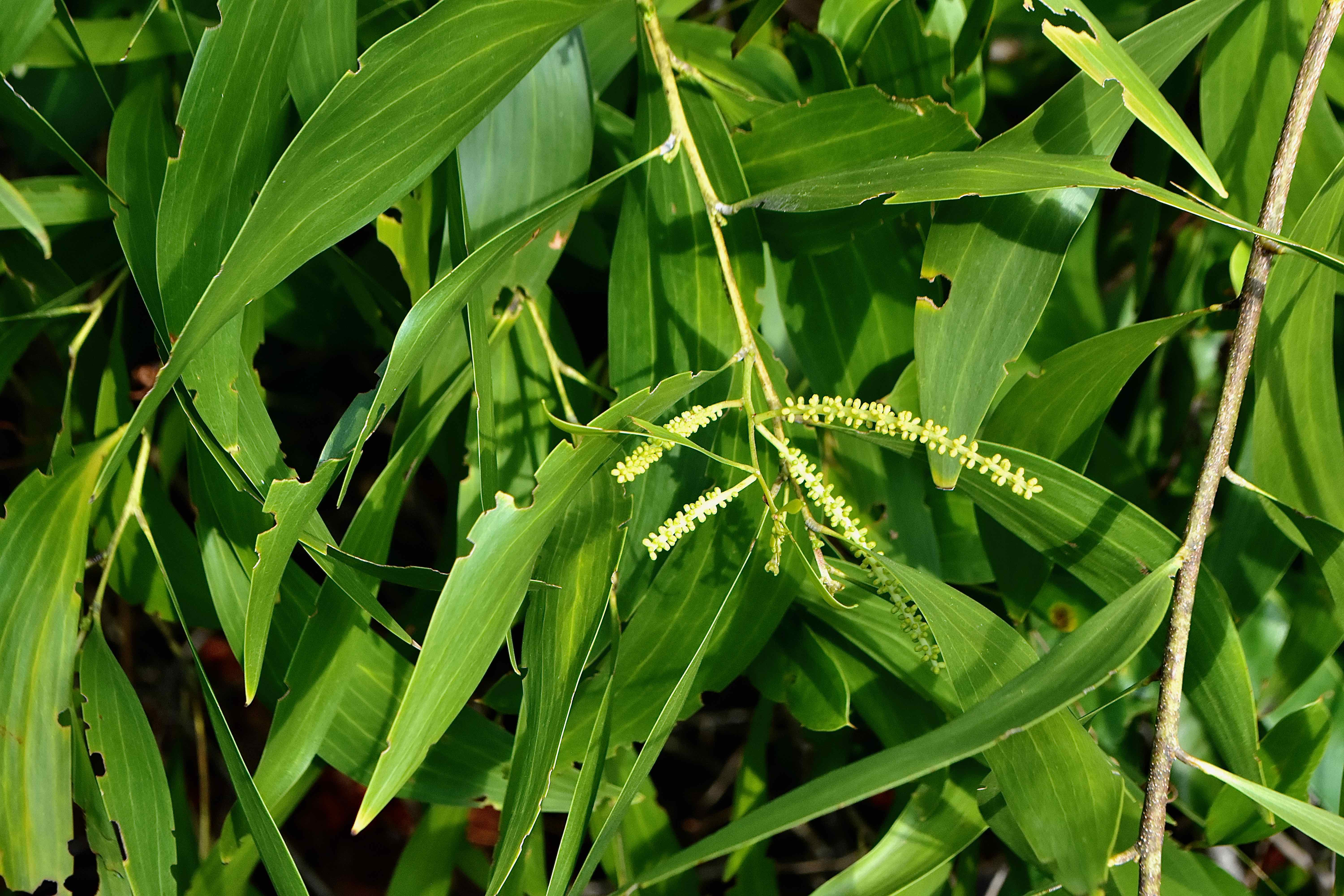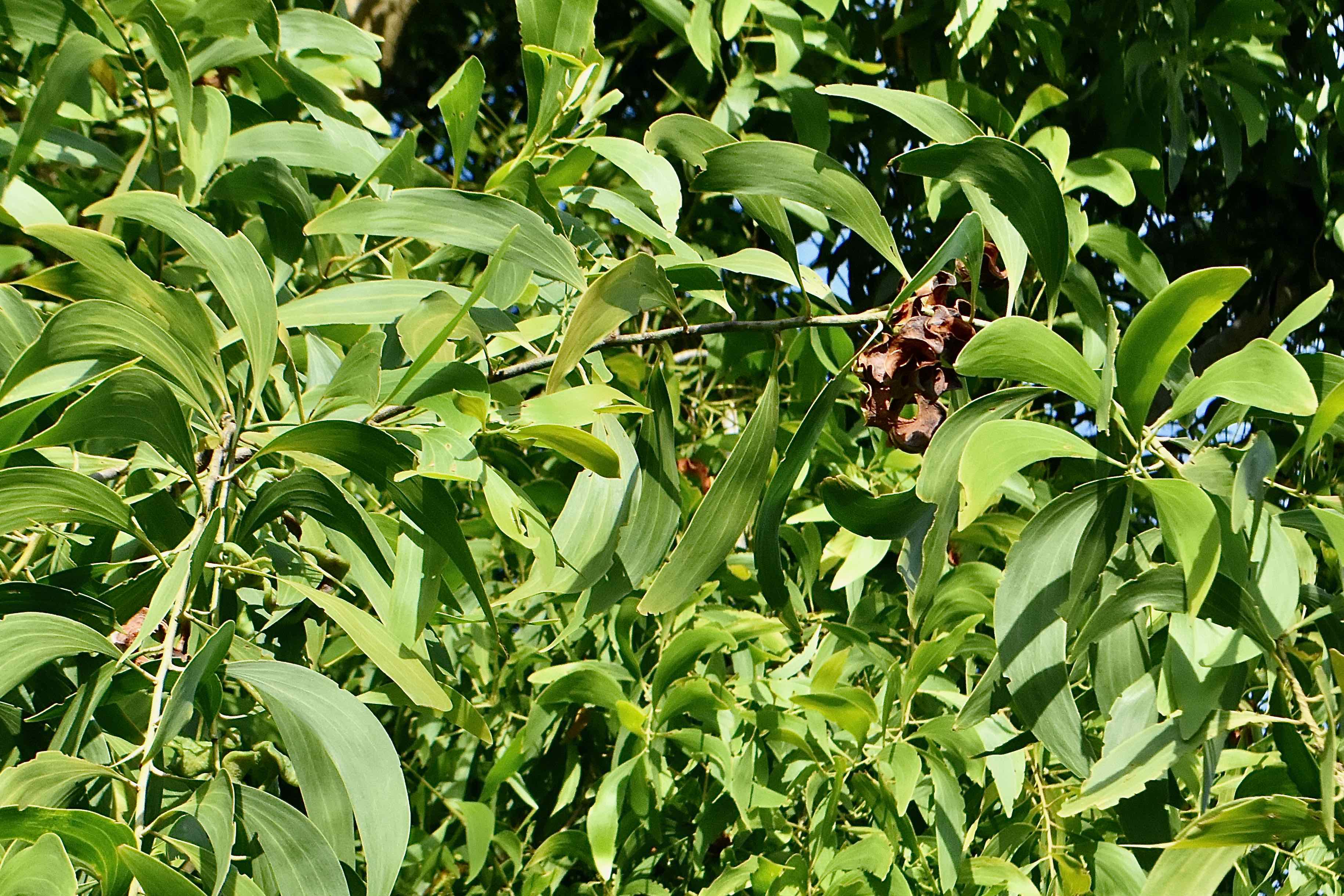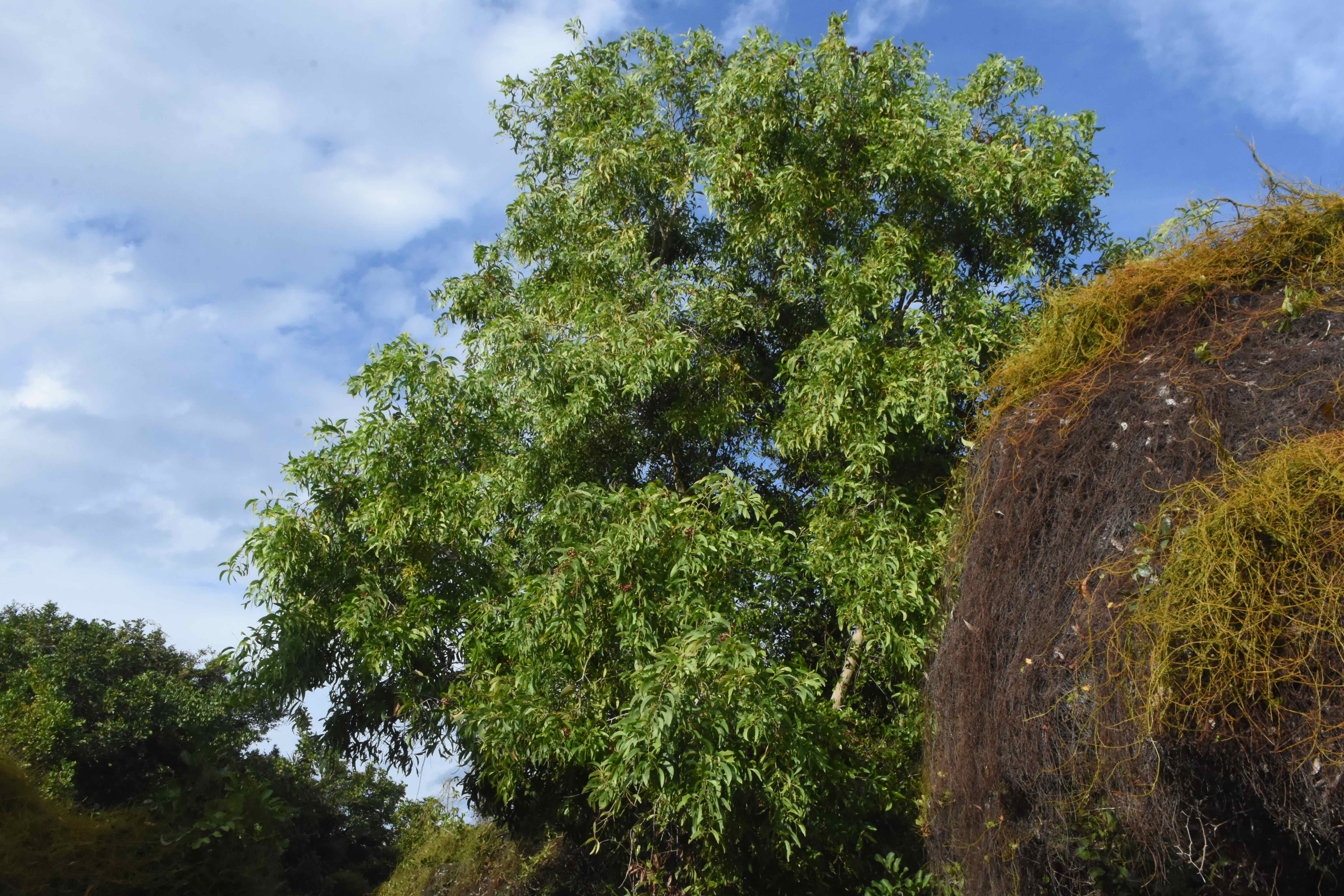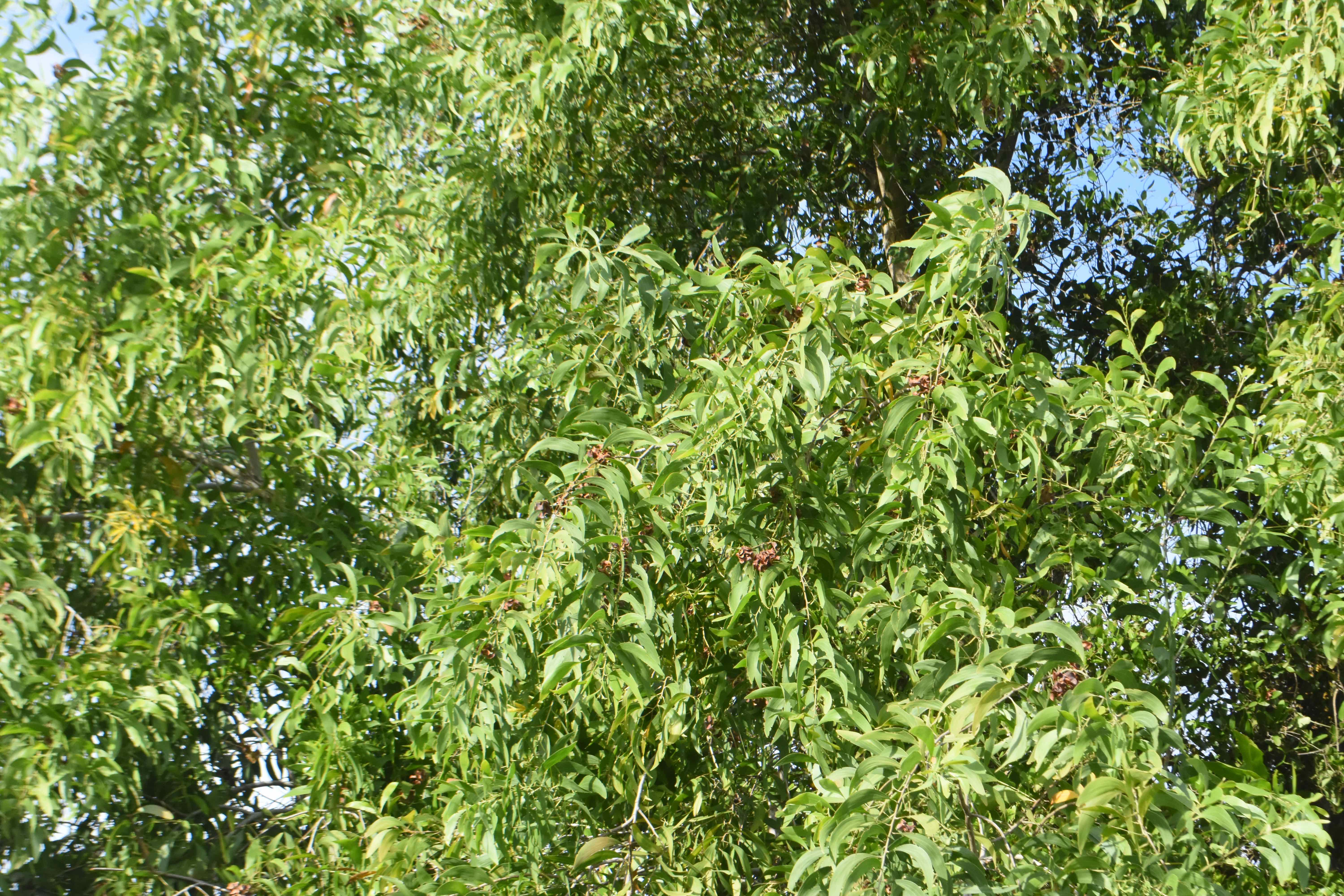
Earleaf acacia, photographed at Leon M. Weekes Environmental Preserve, Delray Beach, Palm Beach County, in February 2022.
Earleaf acacia, Acacia auriculiformis, would seem to be the perfect shade tree for South Florida. It grows rapidly, the flowers are lovely, the crown rounded and dense, its shade a perfect spot to escape the heat of the broiling sun.
But, like too many other seemingly beneficial organisms imported into the region, the devil is in the details. Yes, earleaf acacia is a rapid grower, but its wood is brittle and susceptible to breaking when stressed by high winds, not exactly a practical choice in a region prone to hurricanes and tropical storms. But wait! There’s more!
Earleaf acacia reproduces like crazy and can invade in a variety of habitats, dry or wet, and thrive in all of them to the point of crowding out native vegetation. More mundanely, it is a messy tree; park your car underneath one and you might find it buried under a pile of leaves and seed pods. Having once lived at an apartment complex where they were planted along the parking lot, we exaggerate only slightly.
It’s the “reproduces like crazy” feature that’s made earleaf acacia a Category 1 invasive as determined by the Florida Invasive Species Council, formerly known as the Florida Exotic Plant Pest Council. Category 1 status means it is flourishing in the wild and displacing native species and damaging ecosystems. FLEPPC has no force of law, but some local governments, including Palm Beach County, have made it illegal to plant earleaf acacia, encouraging, but not requiring its removal except under certain circumstances.
The other two, the brittle wood and messy habitats, should give anyone pause before planting it on their property. A more suitable substitute: West Indian mahogany.
Earleaf acacia is a native of northern Australia, more particularly the north coast of Queensland, plus Papua New Guinea and Indonesia.
It’s been exported to tropical and subtropical places around the globe as an ornamental tree, for use in reforestation, to improve soil and for lumber and pulp. It’s categorized as an invasive in parts of Asia, Africa and the Pacific as well as the Sunshine State.
It was imported into Florida in 1932 for use as an ornamental, but it didn’t really become popular as a landscaping tree until the 1940s and 1950s. One author described it as “one of the finest fast-growing trees for dense shade, beautiful form, and flowers."
Even as it became evident that earleaf acacia could not stand up to winds well short of hurricane strength, making it impractical, even dangerous for use in South Florida, some landscapers continued to plant it because of its fast-growing ability — it can grow as much as six to eight feet in a single year and hit 50 feet or more within eight years of planting — well into the 1980s.
In Florida, earleaf acacia is found in the wild mainly in coastal areas from as far north as Brevard County on the Atlantic Coast, south through the Keys and as far north as Hillsborough County along the Gulf.
The leaves are distinctly curved like a sickle, four to eight inches long and have three to seven veins that run parallel to each other from the stem to the apex. They are simple, entire, meaning no lobes or serations along the outer edges and arranged alternately along the stem.
Earleaf acacia can have multiple stems, or trunks, but usually has only only one. The bark is greenish-white and smooth on younger trees, becoming greenish-brown and furrowed as the trees age. The branches lack thorns sported by other acacias.
The bright yellow flowers are tiny but grow on spikes two to three inches long that amplify their effect. The spikes emerge at leaf axils — the point where leaves meet the branch —or in clusters of spikes at the end of branches. The flowers give way to a pod that goes from green and oddly twisted to dead-leaf brown and gnarly looking at maturity. The mature pods vaguely resemble human ears. (We’ve seen references that say this is the inspiration for the common name, while others point to the curved leaves. Take your pick. They both work.)
A mature tree can produce as many as 47,000 seeds in a year, according to the University of Florida’s Center for Aquatic and Invasive Plants. As we noted earlier, earleaf acacia reproduces like crazy, and those seeds end up in the stomaches and poop of birds, which distribute them as they fly hither and yon.
It is drought tolerant, which allows earleaf acacia to invade and thrive in the scrubs of coastal South Florida. It can take over pinelands and hammocks, if it gets a chance. It is salt tolerant. Its one limitation: it does not handle cold weather well, which prevents it from establishing itself north of Brevard and Hillsborough counties.
Within its native range, earleaf acacia is an extremely useful tree. It is cultivated for use as lumber and pulp for paper. It will grow and do well in places where other trees won’t. And because it is a legume, it will fix nitrogen to the soil. Throw in its fast growth rate and good looks and it’s easy to see why it’s been exported to warmer place around the globe.
Other common names for earleaf acacia: earpod wattle, northern black wattle, Papuan wattle and tan wattle. It is a member of Fabaceae, the pea family.
Leon M. Weekes Environmental Preserve



